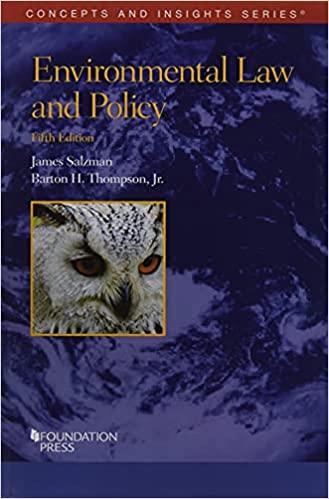Question
CASE STUDY business law. A group is two or more interacting and interdependent individuals who come together to achieve specific goals. Formal groups are work
CASE STUDY business law. A group is two or more interacting and interdependent individuals who come together to achieve specific goals. Formal groups are work groups that are defined by the organization's structure and have designated work assignments and specific tasks directed at accomplishing organizational goals. Informal groups are social groups. The forming stage consists of two phases: joining the group and defining the group's purpose, structure, and leadership. The storming stage is one of intragroup conflict over who will control the group and what the group will be doing. The norming stage is when close relationships and cohesiveness develop as norms are determined. The performing stage is when group members began to work on the group's task. The adjourning stage is when the group prepares to disband. The major components that determine group performance and satisfaction include external conditions, group member resources, group structure, group processes, and group tasks. External conditions, such as availability of resources, organizational goals, and other factors, affect work groups. Group member resources (knowledge, skills, abilities, personality traits) can influence what members can and how effectively they will perform in a group. Group roles generally involve getting the work done or keeping group members happy. Group norms are powerful influences on a person's performance and dictate things such as work output 25 levels, absenteeism, and promptness. Pressures to conform can heavily influence a person's judgment and attitudes. If carried to extremes, groupthink can be a problem. Status systems can be a significant motivator with individual behavioral consequences, especially if incongruence is a factor. What size group is most effective and efficient depends on the task the group is supposed to accomplish. Cohesiveness is related to a group's productivity. Group decision making and conflict management are important group processes that play a role in performance and satisfaction. If accuracy, creativity, and degree of acceptance are important, a group decision may work best. Relationship conflicts are almost always dysfunctional. Low levels of process conflicts and low-to-moderate levels of task conflicts are functional. Effective communication and controlled conflict are most relevant to group performance when tasks are complex and interdependent. The challenges of managing global teams can be seen in the group member resources, especially the diverse cultural characteristics; group structure, especially conformity, status, social loafing, and cohesiveness; group processes, especially with communication and managing conflict; and the manager's role in making it all work. With the emphasis on teams in today's organizations, managers need to recognize that people don't automatically know how to be part of a team or to be an effective team member. Like any behavior, team members have to learn about the skill and then keep practicing and reinforcing it. In building team skills, managers must view their role as more of being a coach and developing others in order to create more committed, collaborative, and inclusive teams. Managers need to understand the patterns of informal connections among individuals within groups because those informal social relationships can help or hinder the group's effectiveness.
Question 21 Why, sometimes in cases of aspiration pneumonia, would the level of lymphocytes drop below normal range while the level of white blood cells (WBC) and neutrophils are above normal range?
Question 22 Should steroids be used in the treatment of a standard case of pneumonia in a young child?
Question 23 I want to know more about the epidemiology and pathophysiology of this severe acute respiratory syndrome (SARS) scare and what advances have been made in its therapy.
Question 24 What symptoms will confirm, without doubt, a diagnosis of tuberculosis?
Question 25 Please could you tell me the skin-prick test result for non-infected and non-immune tuberculosis carriers?
Question 26 Please can you help me find the answer to whether the purified protein derivative (PPD) in the tuberculin skin test develops memory T lymphocytes? If so, would it not be confusing with the way BCG vaccine works?
Question 27 In diseases that have night sweats as a symptom (e.g. tuberculosis, infective endocarditis), what causes the sweats to occur only at night and not consistently during the day as well?
Question 28 An asymptomatic patient, whose tuberculous pleural effusion has subsided after a year's treatment of anti-TB, is left with a small loculated effusion, apparent on ultrasound and chest X-ray. Should this be aspirated?
Question 29 I want to know what are the exact indications for using steroids in patients with tuberculous pleural effusions/ascites?
Question 30 Should prednisolone be added to the anti-tuberculosis therapy in all cases of massive tuberculous effusion? Does the quick absorption help prevent fibrosis?
Step by Step Solution
There are 3 Steps involved in it
Step: 1

Get Instant Access to Expert-Tailored Solutions
See step-by-step solutions with expert insights and AI powered tools for academic success
Step: 2

Step: 3

Ace Your Homework with AI
Get the answers you need in no time with our AI-driven, step-by-step assistance
Get Started


